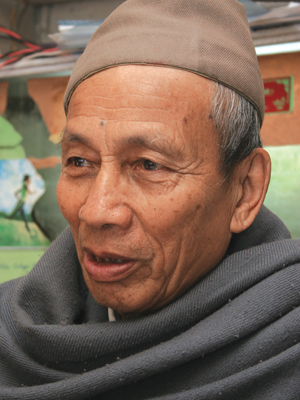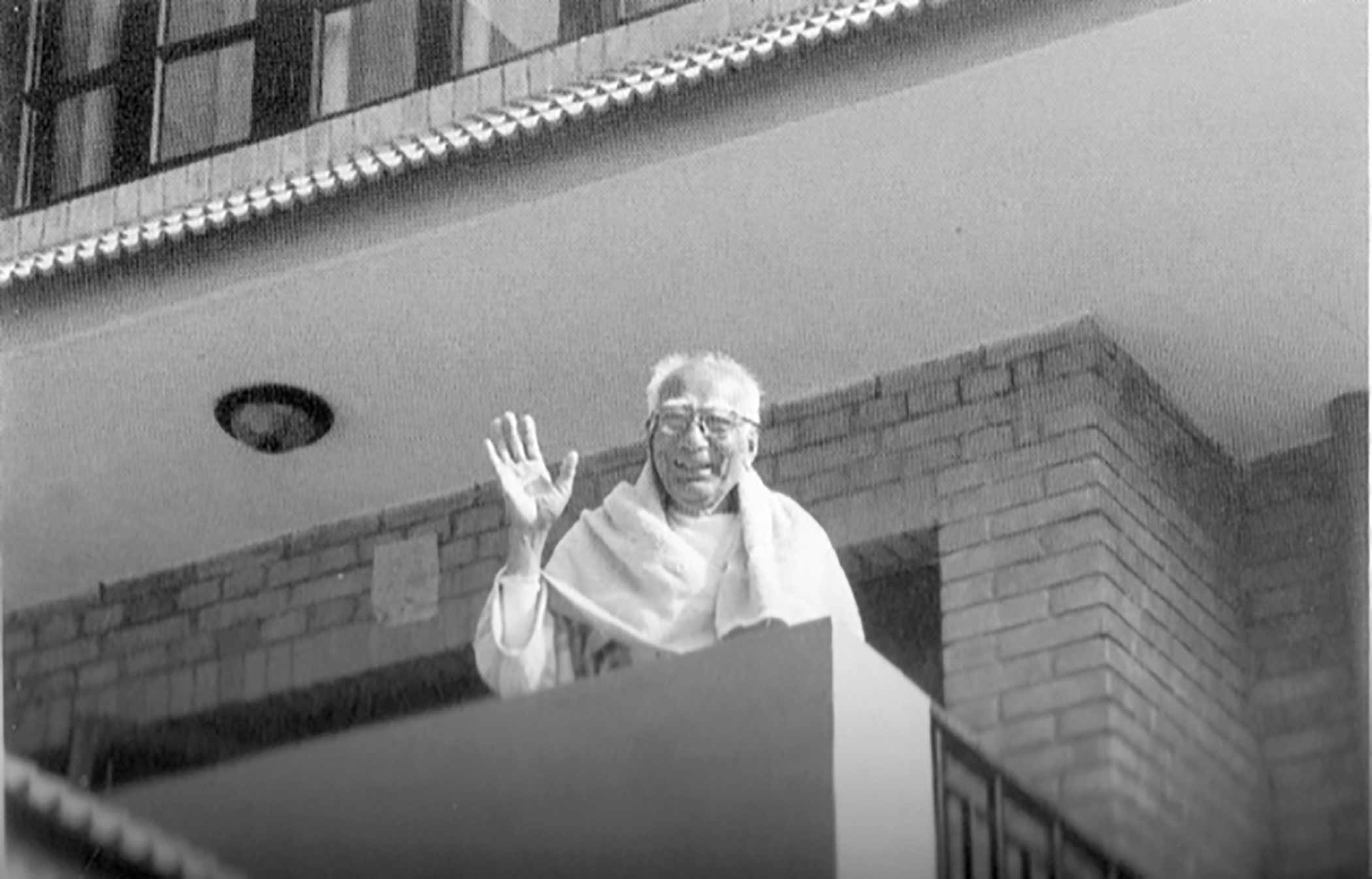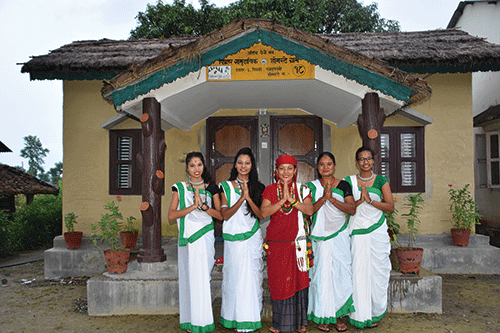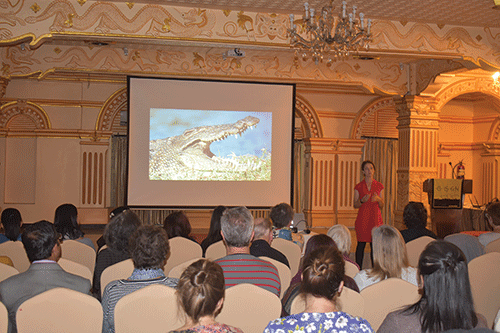What does a Yeti look like and have you climbed the lofty mountains too?” were the first questions heard by Satya Mohan Joshi when asked by the New Zealanders, when he set foot in their country. Not understanding why, he unknowingly became the first Nepali to set foot in New Zealand, a day after Tenzing and Hillary climbed Mt. Everest for the first time in Nepal.
 “Addressing Satya Mohan Joshi as the gardener of Nepal’s rich cultural bubble would do justice to some extent, but it goes far beyond that. In the midst of his cultural knowledge, simple and literate people would bow like the white clouds almost at the acme of Mt. Nagarjuna,” explained a fortnightly magazine recently. Expertly writing in all spheres of literature and culture, Satya Mohan Joshi is not only regarded as a successful administrator, but is also considered the foremost preserver of folk culture and its diversity in Nepal. Known as “Jack of all trades and master of all,” he is also a successful dramatist and playwright, poet and research analyst and has made considerable contributions to the literary world of Nepal. Due to his perseverance and dedication to Nepal’s folk culture, he was awarded the Madan Puraskar three times for his work “Hamro Lok Sanskriti – Our Folk Culture (1956), Nepali Rastriya Mudra – The Coinage of Nepal (1957) and Karnali Lok Sanskriti – Folk culture of the Far-Western Zone Karnali (1971). He is also the award holder of “Shrestha Sirpa” for his outstanding book Jayaprakash; which is an epic in Nepal Bhasa (Newari) and is a life member of the Royal Nepal Academy. He is also the Chancellor of The Nepal Bhasha Academy.
“Addressing Satya Mohan Joshi as the gardener of Nepal’s rich cultural bubble would do justice to some extent, but it goes far beyond that. In the midst of his cultural knowledge, simple and literate people would bow like the white clouds almost at the acme of Mt. Nagarjuna,” explained a fortnightly magazine recently. Expertly writing in all spheres of literature and culture, Satya Mohan Joshi is not only regarded as a successful administrator, but is also considered the foremost preserver of folk culture and its diversity in Nepal. Known as “Jack of all trades and master of all,” he is also a successful dramatist and playwright, poet and research analyst and has made considerable contributions to the literary world of Nepal. Due to his perseverance and dedication to Nepal’s folk culture, he was awarded the Madan Puraskar three times for his work “Hamro Lok Sanskriti – Our Folk Culture (1956), Nepali Rastriya Mudra – The Coinage of Nepal (1957) and Karnali Lok Sanskriti – Folk culture of the Far-Western Zone Karnali (1971). He is also the award holder of “Shrestha Sirpa” for his outstanding book Jayaprakash; which is an epic in Nepal Bhasa (Newari) and is a life member of the Royal Nepal Academy. He is also the Chancellor of The Nepal Bhasha Academy.
Starting at the beginning . . .
I was born to Shankar Raj and Rajkumari Joshi in the year 1920 in Bakhutole, Patan and am the first son of the family and it was not imagined that I would reach where I am because I started speaking only at the age of 5. But in the course of my career in the government sector in 1944, I became the first director of the Archeological and Cultural Department in 1959, and immediately established the Rastriya Naachghar – National Theatre in Kathmandu, Archeological Garden in Patan, Archeological Musuem in Taulihawa and the National Painting Musuem in Bhaktapur. Following the political change in 1960, I resigned from office and visited China and stayed there for almost five years teaching Nepali at the Peking Broadcasting Institute. During my stay in China, I started my research on Arniko – the genius of the Malla period who migrated to China in early 1260AD. Initially it was received with skepticism in China, as the hosts and my own countrymen were not aware of Arniko’s actual birth place.
But who is Satya Mohan Joshi or how would you identify yourself in your own words?
I have worked in my own mother tongue and national language. If I talked about my life, it is a story in itself and numerous publications have given credit in their own words. Folk culture is my subject and my career started by collecting folk songs. After my first Madan Puraskar, folk culture became a new subject in itself: to be analyzed and researched. It was not only folk songs but also about folk tales, folk riddles, folk lifestyle and its development, etc. The word Jhyaure as it is known in Nepal, was and often is used negatively as people are not aware of the combination of its many fields of study. During my visit to the eastern parts of Nepal in the early days, recreation of any kind was not available. Fresh out of college, the only means to entertain myself after a hard working day was to visit places where they sang local love songs at places like Rodhi Ghars, the singing clubs. The local life and environment played a big role in the course of my life. The simplicity of the folk songs of that area and its literary value were priceless. I had studied western and eastern literature and had been impressed with the likes of Tennyson, Woolworth, Kalidas, Raghubansha and Percy Bysshe Shelley who wrote the famous line “The sweetest songs are those that tell the saddest thoughts”. She was an educated person but was she a match for the uneducated womenfolk out in the rural “gaons” or villages who sang “Aaja Bholi Kina-ho-kina, Mero Maan-ta Daandha-ko Baatash – Don’t know why my heart is like the breeze on top of the hills” was a lasting impression due to its philosophy because during the second world war, the villages were bare without men, as they had enlisted in the British army to fight the Germans. It spoke volumes because it had music and imagination because without its combination, poetry becomes artificial. The comparative study thus proved that simplicity of ones worthy expression in words is a million in dimes, a priceless study and a treasure. That is how my journey started and the books that I have written and my contribution would speak for itself. I remain as I am.
… and your first Madan Puraskar . . .?
During my affiliation with the people of the villages, I started collecting folk songs in the written form and while in the process of printing it in the monthly paper Aantarang, I was introduced to the editor, Gopal Prasad Risal, who played a vital role in my development. With his feedback and encouragement, I started developing the urge and desire to treasure our folk culture and came out with Hamro Lok Sanskriti, which received the award. Mentionable is the fact that it was not me who received the award, but the publication Hamro Lok Sanskriti itself because it was not my creation. It was a natural creation of the simple folks in the villages and the credit should go to them.
In which direction is our culture and lifestyle moving?
Our culture and lifestyle is changing rapidly. At present, I feel that we have not been able to stand on our own feet. Even our habits are changing due to outside intervention and influence. We are forgetting our nationality, our identity and our fundamental nature and one of the main causes is the situation in the country. What would happen if we forgot who we are?
Please elaborate on your own lines: “We should understand and absorb the entrusted interest of our cultural diversity, and benefit from it and then move ahead.”
Folk culture at times is looked upon as commercial today, but I look at it from a different perspective. I see it as a cultural value for national development and common national culture. If Nepal had only one language and one culture, it would have been easier, but each culture has their own language, script and customs handed to them by their forefathers. I say, geographically Nepal may be small, but it is a multilingual and multicultural society and a cultural conglomeration would help Nepal reach the acme of cultural wealth and development. The status of all cultures is the same, so why not a cultural unity, with a national cultural policy? We are all the same nationally, and we should learn to respect each other, our common culture and our values. Realizing this fact will help us move ahead towards development.
Any publications on your views?
The publication is named Cultural Policy: A Preliminary Study. It features my research on cultural properties, cultural heritage and cultural policy. It deals with some basic principles of National Cultural Policy, Cultural Diversity and National Culture, and a study report of the Karnali Folk-Culture.
Tell us more about your book Legends of Lalitpur?
A lot has been written about the history of Lalitpur. As in other countries, we also have our own traditions and in the course of my comparative studies much similarity was seen. Similarities like mother’s and father’s day are instances that bring harmony amongst us though we come from different countries and cultures. Humans are alike and culture acts like a catalyst. Thus, in my own way I wrote Legends of Lalitpur and as I said earlier, cultural philosophy is present in my book. The cover photo of the book portrays King Yog Narendra Malla of the 17th century sitting crossed legged on a pillar. Behind him is a replica of a serpent and on its head sits a small bird. It is still believed that the king is alive today. It is a charming legend woven with the philosophy of longevity. Now if you would like to hear the whole story behind the statue, the book is my gift to you.
Are you content with your contribution?
What ever I could do, I did. Frankly, I’m happy because I did what I loved doing most. But whatever I started, no one continued with serious intentions. My research on Arniko and the Coinage of Nepal are benchmarks for aspiring scholars, but I cannot blow my own trumpet. Yes, I have done my part and am happy when friends wish me for a job well done.
Ani Choying Drolma: Life Post Covid
Covid changed the lives of most people, some for the better and some for the worse. Ani Choying Dromla took...










